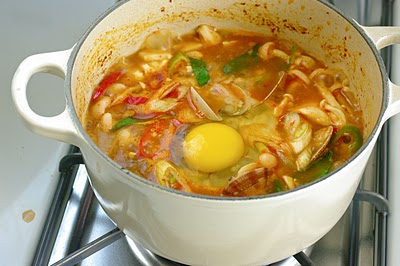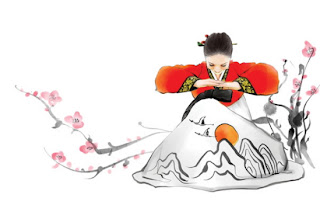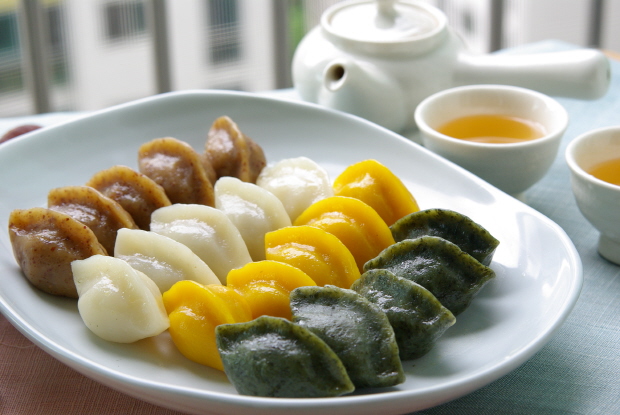안녕하세요, I hope you all had a great week. I've come to tell you about my experiences of 추석. It went amazingly great and exceeded my expectations. I wasn't able to take pictures of everything, but I did get the fun parts. There were booths lined up to tell you about South Korea and it's culture.
The first booth you saw as you walked in, was a booth based solely on visiting Seoul (서울), the capital. I spoke with the girls a little, and it turns out you can get a Korean name for yourself if you visit a temple in Seoul. However doing some research online, I was not able to find it (drats).
The next booth of five was about Hanbok. Hanbok is the traditional Korean clothing that consists of two different styles. The females wear a long dress that starts at the cleavage, ends on the floor. It can be many layers depending on the seasons. The dress is covered by a small jacket that ends around your waist. Below you can see the red fabric is for the female, however it's not enough to show you the
full outfit.
The males wear large "baggy" pants that's very suitable for sitting on the floor with a large overcoat. Their traditional outfit also includes shoes and a hat for the respective genders. The females don't really wear "hats" but rather hairpieces that signifies their social status. You can find more information of this webpage about
hanboks.
The next booth was on 태권도.
I found it to be very fascinating because I asked what the difference was between Tae Kwon Do and the other marital arts, and the booth leaders stated,
"The main difference is where it originates from, and at with this particular form, it means to strike with foot. We emphasize on continuing the military form of 태권도 and we emphasize on perserving the history of this method."
They also had a performance.
The rest of the booths were basically about Korean cuisine and Barley tea. I saved you from the trouble of getting hungry by not taking any pictures.
There were two more performances I found very critical to the culture of South Korea. One was 부채춤, and the other was another traditional Korean dance, but to my dismay, there are several of those. 부채춤 translate literally into "fan dance" and this is what it looked like.
Her movements mostly resembled a butterfly, which was the whole purpose. It was very entrancing to watch as well as the traditional dance.
The traditional dance was at first used in the Joseon Dynasty to entertain the royals. The dancer had to be very graceful and to show her talents, such as tightrope walking, horse riding, and throwing a ball. Simpler times calls for simpler entertainments.
I also found an area that no one visited mainly, because it was a study abroad booth. Not connected to the local Korean club, but it was on a school campus, so the placement made sense.
I found a student inquiring for details of Yonsei University. :)
















